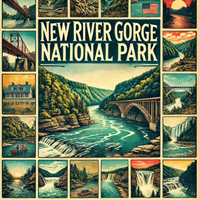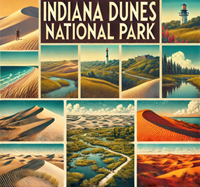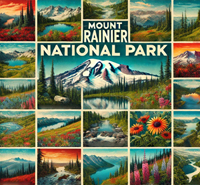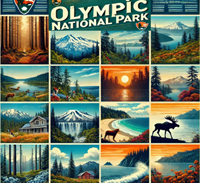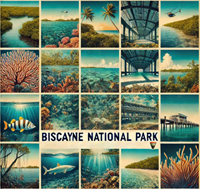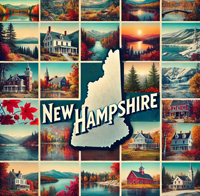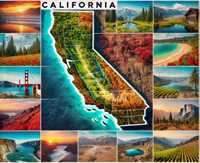
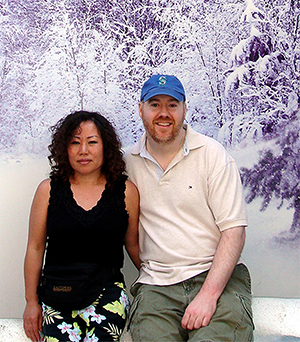
William and Hui Cha Stanek have meticulously crafted these national park guides, each showcasing the most stunning landscapes across the USA. But beyond the breathtaking scenery, these guides delve into the stories, experiences, and connections that make each park visit truly memorable.
National Parks Index | US Itineraries Index | American Roadtrips Index
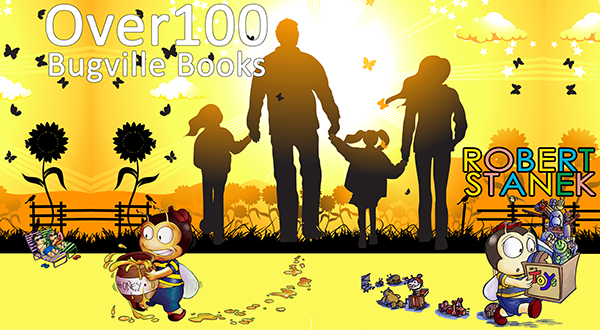
Bring home a Bugville Critters book and watch as your child's love for reading and learning grows with every page. Hand-painted illustrations bring the heartwarming stories to life. Ask your librarian to add Bugville Critters to the library's digital collection today!
Discover William Stanek's Exclusive Art Collection
Explore and purchase the stunning art featured on this site. Own a piece of William Stanek's unique and captivating artwork today!
(May 2, 2025) Introducing Death Valley National Park: The Extremes of Nature
Introduction to Death Valley National Park
Death Valley National Park is a land of extremes, where the harsh desert environment reveals a surprising beauty and resilience. My first experience of Death Valley was during the early morning hours, standing at Badwater Basin, the lowest point in North America. The vast salt flats stretched out before me like an endless white desert, contrasting sharply with the surrounding mountains. Despite its name, Death Valley is teeming with life, from the vibrant wildflowers that bloom after rare rains to the hardy creatures that call this place home. One of the most unforgettable moments was watching the sun set over Zabriskie Point, where the colors of the barren landscape seemed to come alive. Death Valley challenges you but also rewards you with its stark and haunting beauty.
How to Reach Death Valley National Park
From the South (Los Angeles, CA): Visitors from Los Angeles can drive north on Interstate 15 to Baker, then take Highway 127 north to Death Valley Junction. From there, Highway 190 leads into the heart of the park. This route covers approximately 270 miles and takes around 4.5 hours.
From the North (Las Vegas, NV): Travelers from Las Vegas can take Highway 160 west to Pahrump, then Highway 190 into the park. The distance is about 120 miles, with a travel time of around 2 hours.
From the East (Phoenix, AZ): Those coming from Phoenix can follow Interstate 10 west to Highway 95 north, then take Highway 190 west into Death Valley. This journey spans around 400 miles and takes approximately 7 hours.
From the West (San Francisco, CA): Visitors from San Francisco can drive east on Interstate 580 to Interstate 5 south, then take Highway 58 east to Highway 14 north and finally Highway 190 east into the park. This extensive route covers about 450 miles and takes around 8 hours.
Exploring Death Valley: Must-Visit Sites
- Badwater Basin: The lowest point in North America, at 282 feet below sea level, offers unique salt flats and otherworldly landscapes.
- Mesquite Flat Sand Dunes: Iconic and easily accessible, these dunes are perfect for sunrise and sunset photography.
- Zabriskie Point: Known for its stunning views of the badlands, Zabriskie Point is a favorite spot for landscape photographers.
- Dante's View: A viewpoint over 5,000 feet above the valley floor, offering panoramic views of the park.
Seasonal Variations
Given its extreme environment, timing is crucial in Death Valley:
- Fall and Spring: These seasons offer moderate temperatures, making them ideal for exploration and photography.
- Winter: Cooler temperatures and occasional snow on the peaks provide a stark contrast to the valley below.
- Summer: With temperatures often exceeding 120 F (49 C), summer visits require caution and preparation.
Visitor Updates for Death Valley National Park
Conservation Efforts
William Stanek's photography in Death Valley emphasizes the harsh beauty of this extreme environment and the importance of preserving it. His images highlight the delicate balance of life in such a harsh climate and advocate for the protection of these unique landscapes from the impacts of climate change and human intrusion.
1 Day at Death Valley National Park: California's Extreme Landscape
Introduction
Spending a day at Death Valley National Park allows you to explore one of the most extreme and diverse landscapes on Earth. Here's a detailed guide to making the most of your visit, with expert tips from William and Hui Cha Stanek.
Morning: Sunrise and Exploration
6:00 AM - Sunrise at Zabriskie Point
- Overview: Start your day with the surreal sunrise at Zabriskie Point, one of the most famous viewpoints in Death Valley.
- Tips from William: Arrive at least 30 minutes before sunrise. Use a wide-angle lens to capture the expansive badlands and the play of light and shadows.
- Insights from Hui Cha: Dress warmly as it can be cold in the early morning. Bring a blanket and some hot coffee to enjoy while waiting for the sunrise.
7:30 AM - Breakfast at Furnace Creek
- Overview: Head to Furnace Creek for breakfast at the visitor center caf .
- Tips from William: Try the local breakfast options. Use this time to review maps and plan the rest of your day.
- Insights from Hui Cha: Fuel up with a hearty breakfast and grab some snacks for the road. Check in with rangers for any updates or recommendations.
Mid-Morning: Iconic Sights
8:30 AM - Badwater Basin
- Overview: Visit Badwater Basin, the lowest point in North America at 282 feet below sea level.
- Tips from William: Capture the unique salt flats and reflections. Use a polarizing filter to reduce glare and enhance the contrast.
- Insights from Hui Cha: The basin can get very hot, so wear a hat and sunscreen. Bring plenty of water to stay hydrated.
10:00 AM - Devil's Golf Course
- Overview: Stop at Devil's Golf Course, a field of jagged salt formations.
- Tips from William: Use a macro lens to capture the intricate details of the salt formations. The harsh midday light can create interesting shadows.
- Insights from Hui Cha: Be cautious while walking as the terrain is sharp and uneven. Enjoy the otherworldly landscape and take your time exploring.
Late Morning: Short Hikes and Scenic Drives
11:00 AM - Artist's Palette
- Overview: Drive the Artist's Drive loop and stop at Artist's Palette, known for its vibrant colors.
- Tips from William: Mid-morning light enhances the colors. Use a polarizing filter to make the colors pop.
- Insights from Hui Cha: This is a great spot for a short walk and some amazing photos. Take in the array of colors and the geological formations.
12:00 PM - Lunch at Furnace Creek
- Overview: Return to Furnace Creek for a lunch break.
- Tips from William: Find a shaded area to enjoy your lunch and review your photos.
- Insights from Hui Cha: Stay hydrated and take a break from the heat. Enjoy a relaxing meal before continuing your adventure.
Afternoon: More Iconic Locations
1:00 PM - Mesquite Flat Sand Dunes
- Overview: Explore the Mesquite Flat Sand Dunes, one of the most accessible dune fields in the park.
- Tips from William: Late afternoon light creates beautiful textures and shadows on the dunes. Use a telephoto lens to capture the curves and patterns.
- Insights from Hui Cha: Wear lightweight clothing and protect your camera from the sand. Walking on the dunes can be tiring, so take your time.
2:30 PM - Harmony Borax Works
- Overview: Visit the historic Harmony Borax Works to learn about the park's mining history.
- Tips from William: Capture the old wagons and machinery against the stark desert backdrop. Use a wide-angle lens for dramatic compositions.
- Insights from Hui Cha: Read the informational signs to learn about the history and significance of borax mining in Death Valley.
Late Afternoon: Photography and Relaxation
4:00 PM - Dante's View
- Overview: Drive to Dante's View for a panoramic view of the entire Death Valley.
- Tips from William: The view is spectacular in the late afternoon light. Use a wide-angle lens to capture the vastness of the valley.
- Insights from Hui Cha: The elevation here makes it cooler than the valley floor. Enjoy the stunning views and take in the grandeur of Death Valley.
Evening: Sunset and Dinner
6:00 PM - Sunset at Mesquite Flat Sand Dunes
- Overview: Return to Mesquite Flat Sand Dunes for sunset photography.
- Tips from William: Use a tripod and experiment with long exposures to capture the changing light and shadows.
- Insights from Hui Cha: The dunes are a popular spot for sunset, so find a quiet place away from the crowds. Enjoy the peacefulness as the sun sets.
7:30 PM - Dinner at Stovepipe Wells
- Overview: Head to Stovepipe Wells for a well-deserved dinner.
- Tips from William: Capture the evening atmosphere of Stovepipe Wells. Try some local dishes and relax after a day of exploration.
- Insights from Hui Cha: Reflect on the day's adventures and enjoy a hearty meal. Stovepipe Wells offers a rustic and charming dining experience.
Death Valley National Park (California/Nevada)
Death Valley National Park, spanning eastern California and western Nevada, is renowned for its extreme conditions and striking landscapes. As the hottest, driest, and lowest national park in the United States, Death Valley offers a unique array of geological features, including sand dunes, salt flats, and rugged mountains. This stark beauty attracts photographers and adventurers from around the world.Park History and Cultural Significance:
- Established as a national monument in 1933 and later designated a national park in 1994.
- The park preserves the history of Native American tribes such as the Timbisha Shoshone, as well as the stories of 19th-century pioneers and miners.
Visitor Centers and Facilities:
- Furnace Creek Visitor Center: The main visitor center offers exhibits, a park film, maps, information, restrooms, and a gift shop.
- Stovepipe Wells Village: Provides accommodations, a general store, gas station, and restaurant.
- Scotty's Castle: Currently closed due to flood damage, but normally offers tours and exhibits about the historic mansion.
Best Times to Visit:
- Winter (December to February): Ideal time to visit with mild temperatures, perfect for hiking and exploring.
- Spring (March to April): Warm temperatures and potential wildflower blooms, especially in wet years.
- Fall (October to November): Cooler temperatures return, making it a great time for outdoor activities.
- Summer (June to September): Extremely hot temperatures can be dangerous. Limited activities are recommended during early morning or late evening.
Activities and Recreation:
- Hiking: Trails range from short walks to challenging backcountry routes, including Golden Canyon, Mosaic Canyon, and Telescope Peak.
- Scenic Drives: Badwater Basin, Dante's View, and Artist's Drive offer spectacular views accessible by car.
- Stargazing: Death Valley is a designated Dark Sky Park, offering excellent opportunities for stargazing and night photography.
- Wildlife Watching: Look for roadrunners, bighorn sheep, and other desert-adapted animals.
- Historical Sites: Visit sites like the Harmony Borax Works and the ghost town of Rhyolite.
Accessibility Information:
- The Furnace Creek Visitor Center and many restrooms throughout the park are wheelchair accessible.
- Accessible viewpoints include Zabriskie Point and Dante's View.
- Some accessible trails and boardwalks, such as the Harmony Borax Works interpretive trail.
Permits and Regulations:
- Entrance Fees: Required for entry; passes can be purchased online or at park entrances.
- Camping Permits: Required for camping at designated campgrounds and backcountry sites. Reservations are recommended during peak seasons.
- Backcountry Permits: Required for overnight stays in backcountry areas.
- Special Use Permits: Needed for activities such as weddings, commercial filming, and large group gatherings.
Nearby: Mojave National Preserve, Red Rock Canyon National Conservation Area, Joshua Tree National Park
-
Mojave National Preserve: About an hour and a half from Death Valley, this preserve features sand dunes, volcanic cinder cones, Joshua tree forests, and historic sites.
- Activities: Hiking, camping, off-roading.
- Notable Sites: Kelso Dunes, Cinder Cone Lava Beds.
- Wildlife: Desert tortoises, bighorn sheep, jackrabbits.
-
Red Rock Canyon National Conservation Area: Located about two hours from Death Valley, Red Rock Canyon is known for its towering red rock formations, scenic drives, and extensive hiking trails.
- Activities: Hiking, rock climbing, scenic driving.
- Notable Sites: Calico Hills, Keystone Thrust.
- Wildlife: Desert bighorn sheep, burros, various reptiles.
-
Joshua Tree National Park: About two hours from Death Valley, Joshua Tree is known for its unique Joshua trees, stunning rock formations, and vast desert landscapes.
- Activities: Hiking, rock climbing, stargazing.
- Notable Trails: Hidden Valley Trail, Ryan Mountain Trail.
- Wildlife: Desert tortoises, bighorn sheep, roadrunners.
Important Updates for Death Valley National Park
Death Valley National Park (California/Nevada)
Local Attractions and Surrounding Areas
Death Valley National Park, located in eastern California and extending into Nevada, is a region of extremes and contrasts, known for its scorching temperatures, expansive salt flats, towering sand dunes, and rugged mountains. The surrounding areas also offer a variety of attractions that complement the park's unique landscape.
Nearby Attractions:
Death Valley National Park is surrounded by numerous attractions that enhance the visitor experience. Here are some must-see local attractions:
-
Dante's View: A viewpoint over 5,000 feet above the desert floor, providing a panoramic view of Death Valley. It's an excellent spot for sunrise and sunset photography.
-
Badwater Basin: The lowest point in North America at 282 feet below sea level. This salt flat provides unique photographic opportunities, especially during the golden hours.
-
Artist's Drive and Artist's Palette: A scenic loop drive featuring colorful hills and rock formations. The varying hues are best photographed in the late afternoon light.
-
Zabriskie Point: Famous for its stunning views of the badlands and surrounding mountains, this viewpoint is particularly popular at sunrise.
-
Scotty's Castle: Although currently closed due to flood damage, this historic house museum offers a fascinating glimpse into Death Valley's history when open.
Consider Also:
-
Furnace Creek: This area within the park offers amenities such as the Furnace Creek Visitor Center, the Ranch at Death Valley, and the Oasis at Death Valley. Visitors can explore the Borax Museum to learn about the region's mining history.
-
Rhyolite Ghost Town: Located near Beatty, Nevada, this abandoned town offers a glimpse into the mining boom of the early 1900s. Key sights include the ruins of the old bank, the school, and the bottle house.
-
Tecopa Hot Springs: Located to the southeast of the park, Tecopa offers natural hot springs that provide a relaxing experience for visitors. The area also features several rustic resorts and spas.
-
Ash Meadows National Wildlife Refuge: Situated near Amargosa Valley, Nevada, this refuge protects a unique desert oasis with rare plants and animals, including several endangered species. It's an excellent spot for bird watching and exploring natural springs.
-
Pahrump, Nevada: This nearby town offers various amenities, including casinos, restaurants, and lodging. It's a good base for exploring the park and other attractions in the region.
Nearby Towns and Cities:
Visitors to Death Valley National Park can find additional amenities and activities in nearby towns and cities:
-
Furnace Creek: Located within the park, Furnace Creek offers accommodations, dining, and a visitor center. The Ranch at Death Valley and The Oasis at Death Valley provide comfortable lodging options.
-
Beatty, Nevada: Just outside the park's eastern boundary, Beatty offers basic amenities, including lodging, dining, and the Beatty Museum and Historical Society.
-
Pahrump, Nevada: Located about an hour's drive from the park, Pahrump offers more extensive amenities, including hotels, restaurants, and the Pahrump Valley Winery.
-
Lone Pine, California: Situated to the west of the park, Lone Pine is a gateway to the Sierra Nevada mountains and offers accommodations, dining, and the Museum of Western Film History.
-
Shoshone, California: A small town south of the park, Shoshone offers basic amenities and access to the historic China Ranch Date Farm.
Scenic Drives
Death Valley National Park offers several scenic drives that showcase its diverse and dramatic landscapes. These drives provide access to some of the park's most iconic features and offer breathtaking views.
-
Artist's Drive:
- Details: This 9-mile, one-way loop road winds through colorful volcanic and sedimentary hills, leading to the Artist's Palette.
- Photography Tips: William Stanek suggests visiting in the late afternoon when the colors are most vibrant. A polarizing filter can enhance the colors and reduce glare.
-
Dante's View Road:
- Details: A 13-mile drive from the valley floor to Dante's View, offering panoramic views of Death Valley and the Panamint Mountains.
- Photography Tips: Hui Cha Stanek recommends visiting at sunrise or sunset for the best light. A wide-angle lens is ideal for capturing the expansive views.
-
Badwater Road:
- Details: This road runs from Furnace Creek to Badwater Basin, passing notable sites like the Devil's Golf Course and Natural Bridge.
- Photography Tips: The Staneks suggest stopping at various points along the road to capture the diverse landscapes. Early morning light provides the best conditions for photography.
-
Twenty Mule Team Canyon:
- Details: A 2.7-mile, one-way dirt road that offers a close-up view of the park's badlands and unique geological formations.
- Photography Tips: This drive is best explored in the soft light of early morning or late afternoon. A telephoto lens can help capture the details of the rock formations.
Other Scenic Drives:
-
Scotty's Castle Road (check repair status):
- Length: 53 miles one way (from Furnace Creek to Scotty's Castle)
- Description: When open, this drive offers a journey through the northern parts of the park, leading to the historic Scotty's Castle, a mansion built in the 1920s. The castle is currently closed for repairs, but the drive itself offers views of the diverse desert landscapes.
Reservations and Timed Entry Information
Click the link to see updates. Wait up to 30 seconds for results.
Best Hikes
Death Valley National Park offers a variety of hiking trails that explore its unique and extreme environments. Here are some of the best hikes, with detailed insights from William and Hui Cha:
-
Golden Canyon to Red Cathedral:
- Details: This 3-mile round-trip trail takes hikers through Golden Canyon to the dramatic Red Cathedral rock formation.
- Key Viewpoints: The towering walls of Golden Canyon and the panoramic view from Red Cathedral.
- Photography Tips: William Stanek recommends hiking early in the morning to capture the warm glow on the canyon walls. A wide-angle lens is ideal for the expansive views.
-
Mosaic Canyon:
- Details: This 4-mile round-trip hike explores a narrow, polished marble-walled canyon with colorful rock formations.
- Key Viewpoints: The smooth, sculpted walls and narrow passages of the canyon.
- Photography Tips: Hui Cha Stanek suggests using a tripod for long exposure shots to capture the details of the marble walls. The best light is in the early morning or late afternoon.
-
Mesquite Flat Sand Dunes:
- Details: An unmarked route across the park's most famous sand dunes, allowing for exploration of the dunes' shapes and textures.
- Key Viewpoints: The highest dunes offer panoramic views of the surrounding mountains and desert.
- Photography Tips: The Staneks recommend visiting at sunrise or sunset for the best light and cooler temperatures. A telephoto lens can help capture the patterns and textures of the dunes.
-
Badwater Salt Flats:
- Details: A short, easy hike from the Badwater Basin parking area out onto the salt flats, providing a unique perspective of the lowest point in North America.
- Key Viewpoints: The expansive salt flats and surrounding mountains.
- Photography Tips: William Stanek suggests using a polarizing filter to enhance the contrast and texture of the salt flats. The best light is in the late afternoon.
-
Darwin Falls:
- Details: A 2-mile round-trip hike to a lush waterfall and oasis in the otherwise arid park.
- Key Viewpoints: The waterfall and the lush vegetation surrounding it.
- Photography Tips: Hui Cha Stanek recommends visiting in the morning for the best light and using a tripod for long exposure shots of the waterfall.
-
Ubehebe Crater:
- Details: A 1.5-mile loop around the rim of this large volcanic crater, offering dramatic views of the crater and surrounding landscape.
- Key Viewpoints: The crater itself and the panoramic views from the rim.
- Photography Tips: The Staneks suggest using a wide-angle lens to capture the scale of the crater. Early morning light provides the best conditions for photography.
-
Telescope Peak:
- Details: A challenging 14-mile round-trip hike to the highest point in Death Valley, offering incredible views from the summit.
- Key Viewpoints: Panoramic views of Death Valley, the Sierra Nevada, and the Mojave Desert from the summit.
- Photography Tips: William Stanek recommends starting the hike early to capture the sunrise from the summit. A telephoto lens is ideal for capturing distant landscapes.
William and Hui Cha Stanek's deep connection with Death Valley National Park is evident in their extensive body of work. William's technical prowess with cameras and lenses, combined with Hui Cha's artistic eye, creates a dynamic partnership that brings the park's beauty to life. They emphasize the importance of patience and timing in landscape photography, often spending hours or even days waiting for the perfect light and conditions.
Their commitment to conservation is also a significant aspect of their work. Through their photography and writings, they strive to raise awareness about the importance of preserving natural landscapes like Death Valley. They support organizations such as the National Park Foundation and the Sierra Club, advocating for responsible tourism and environmental stewardship.
Conclusion
Death Valley National Park, with its extreme temperatures and striking landscapes, offers endless opportunities for exploration and photography. The local attractions, scenic drives, and hiking trails provide a comprehensive experience for visitors. Through the lens of William and Hui Cha Stanek, the park's beauty and significance are captured and shared, inspiring others to appreciate and protect this natural wonder. Whether you are a seasoned photographer or a casual visitor, Death Valley promises a memorable and enriching adventure.
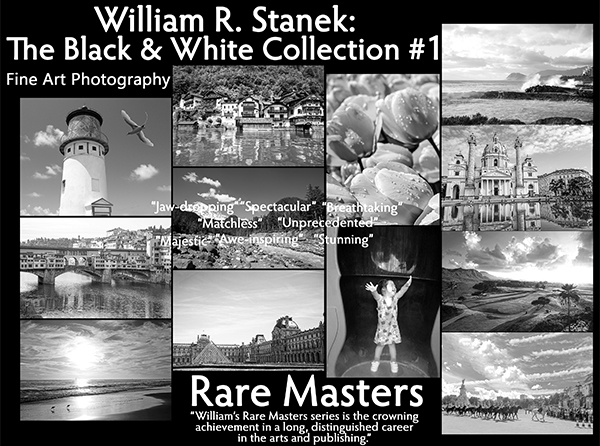
Step into a world of timeless beauty with our premium, oversized hardcover book - crafted for discerning collectors and anyone who values the power of art. Perfect for your coffee table, it's more than just a book; it's a conversation starter, a window into over 30 years of William's visionary photography.
Your Support Matters
Purchasing artwork from William Stanek's collection not only brings beauty into your life but also helps us continue to share. Thank you for supporting our creative journey!

Support The Lights of Paris by Robert Stanek, William Stanek's pen name! Through vivid historical detail and deeply moving character stories, Robert takes readers on an unforgettable journey through one of history’s most transformative times.


